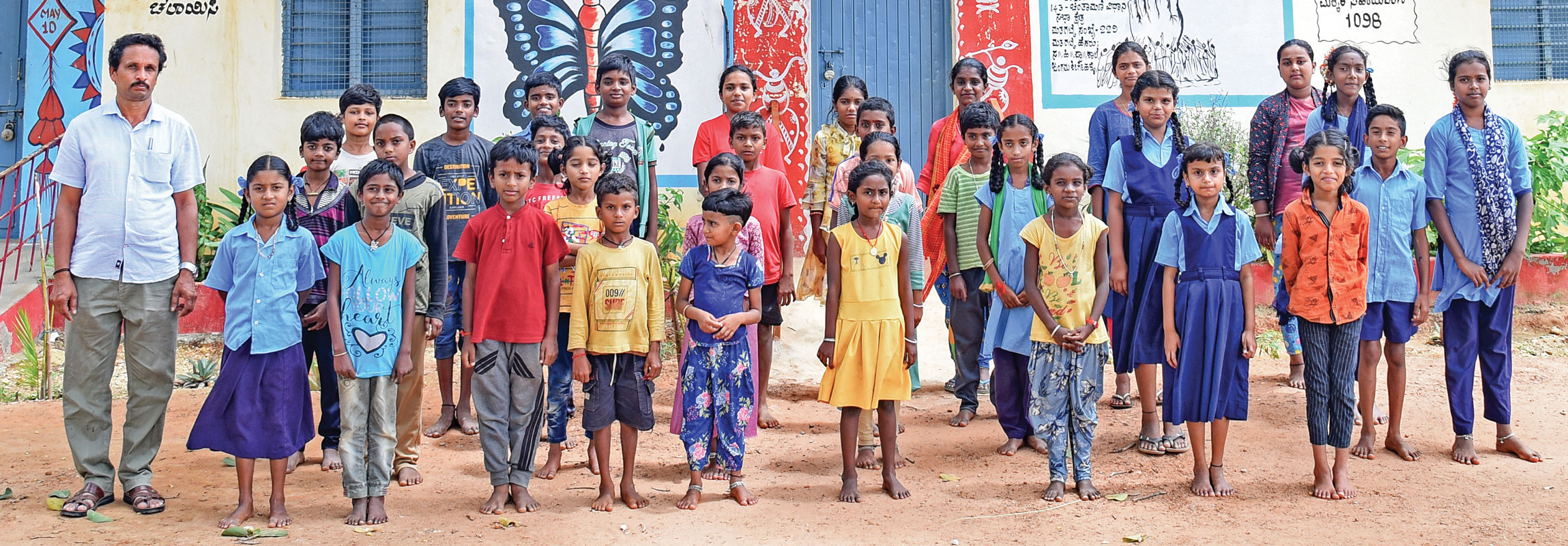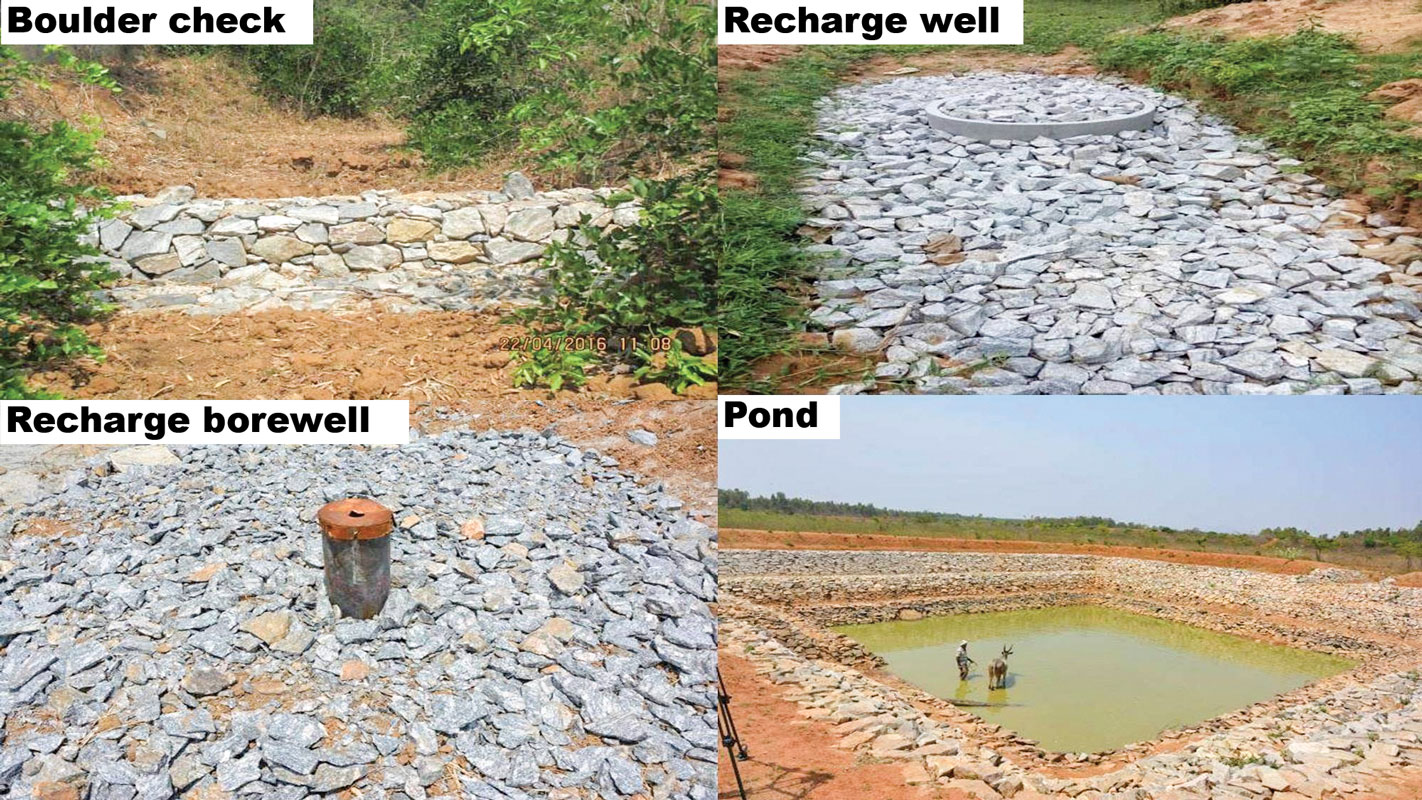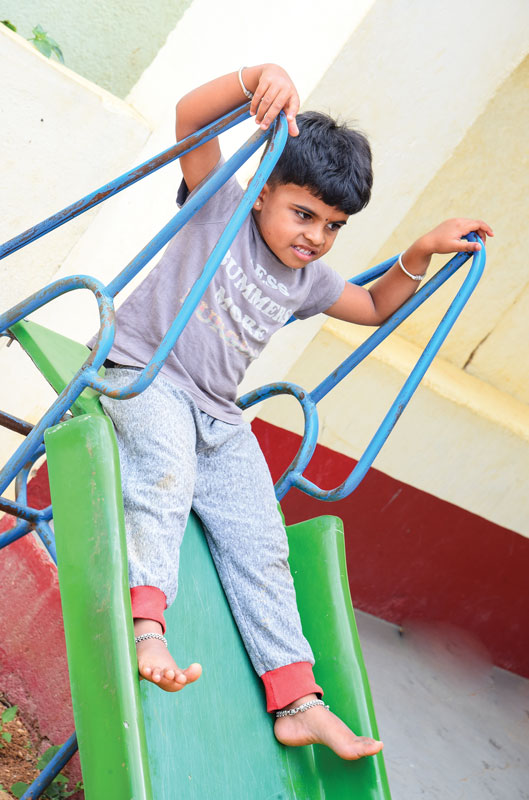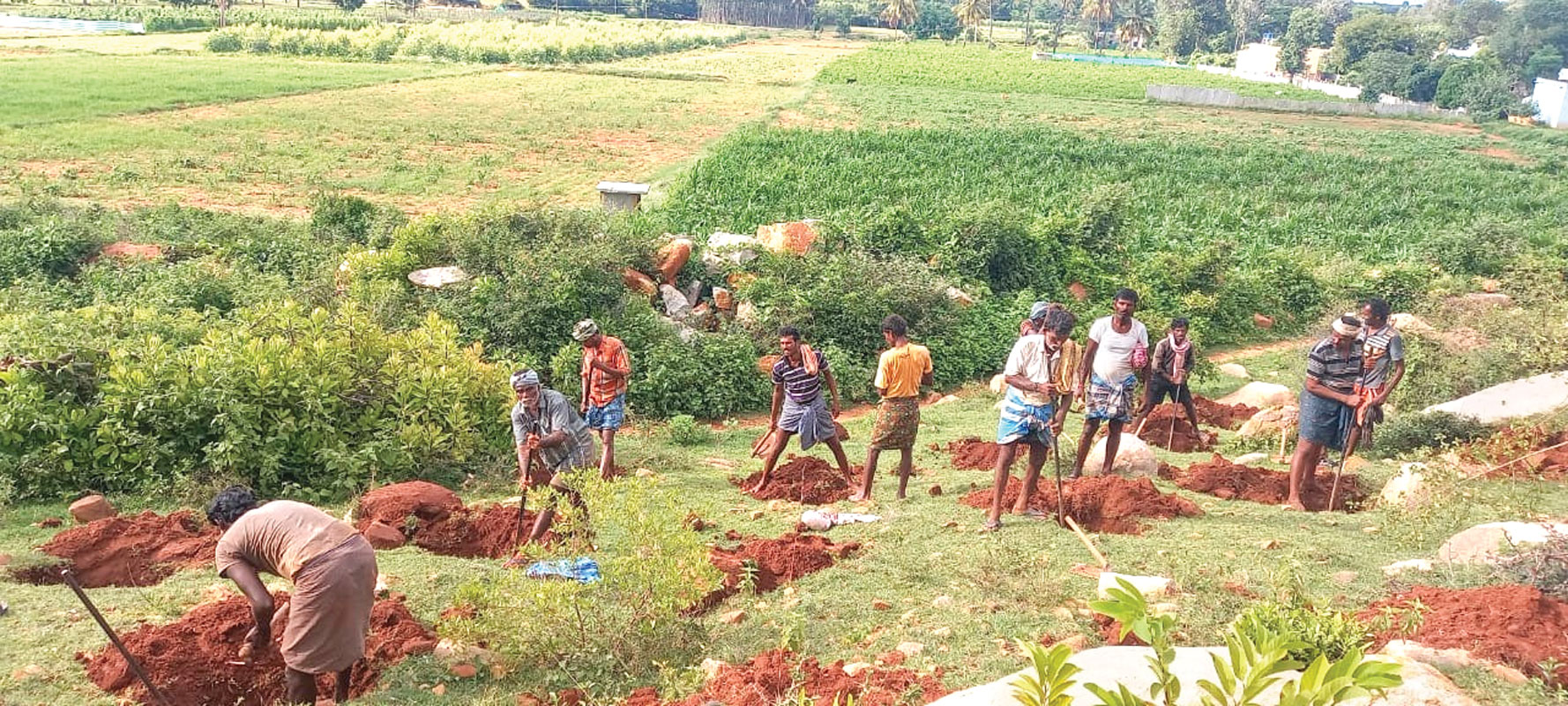RC Bangalore rejuvenates Palar river, transforms villages

Even as there is a lot of political turmoil over the passage of the women’s quota Bill by the Lok Sabha, despite all political parties welcoming it, as it raises several critical issues about the delimitation exercise, when it kicks in, punishing those states that have brought down total fertility rate, I meet a strong, dynamic and vibrant woman panchayat leader in Karnataka. Dressed in a dark pink saree, Rojamma, president of the Mastenalli gram panchayat, about 65km from Bengaluru, is cheerful, self-assured and talks with both confidence and conviction. Now here is a woman who wields soft power, I smile to myself.
We are quite a group — past president of RC Bangalore V S Ranga Rao, a Rotarian of 23 years and a trailblazer; club member Ravishankar Dakoju, who had committed ₹100 crore to TRF and is busy spearheading some mega environmental projects; Ramakant, a director from the Art of Living (AOL) Foundation; and Sreenivasa Rao, a former deputy conservator of Forests. But she holds her own in this group, speaking in Kannada interspersed with enough English to ensure that I understand what she says.
“I am full happy with Rotary; thanks to Rotary we are getting filtered water, small babies and young children are benefitting in the anganwadis, getting good nutrition and healthcare from the Rotary club’s anganwadi development project. The villagers are really happy,” she smiles.
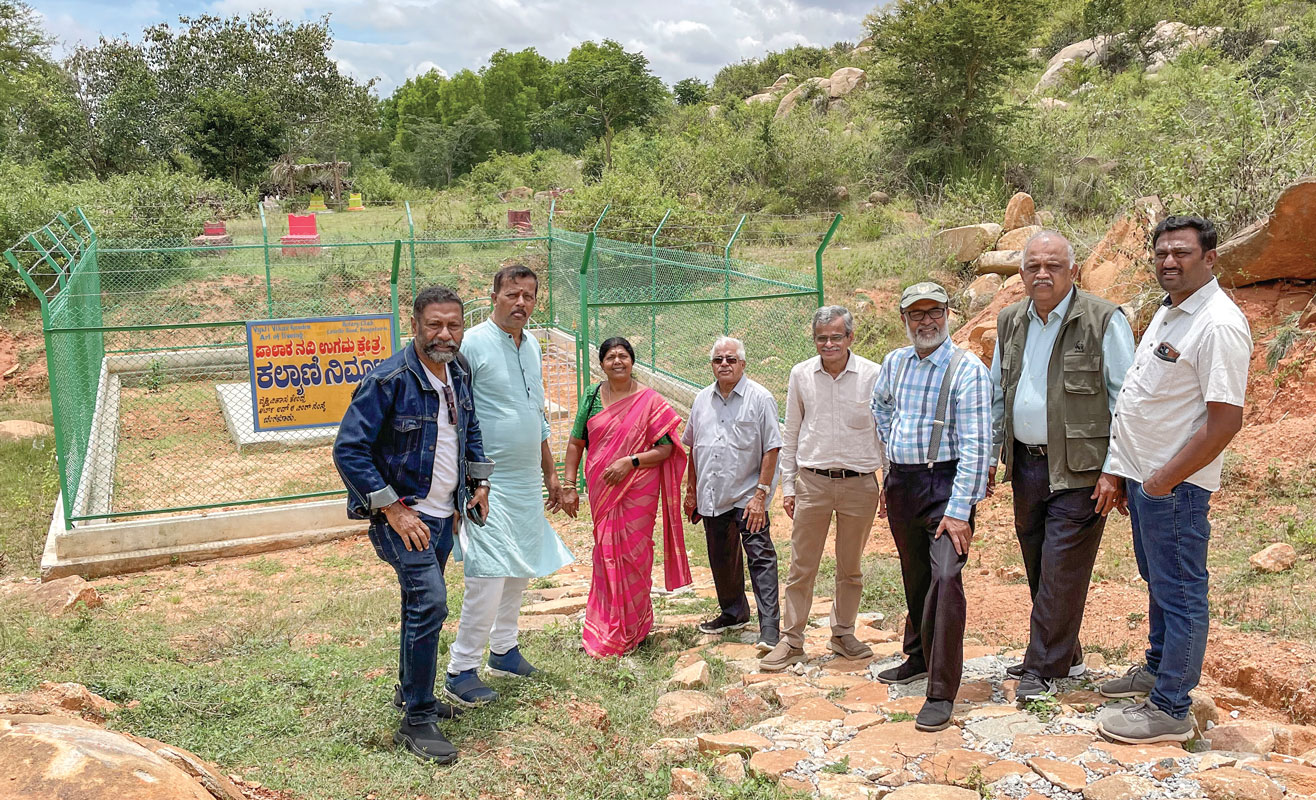
She explains that the six villages under this panchayat have a total population of over 6,000 people. “Their club has reconstructed three anganwadis, of which two were fully constructed as they were actually falling apart. For many years, the primary schools in these villages were in a dilapidated condition… Rotary has reconstructed all these schools.”
As she reels off the names of the places where the schools have been converted into ‘smart’ schools, Ranga Rao, the architect of the mega project to support and restore the riverine ecosystem bang at the origin of River Palar, smiles and explains the objective of the project and how it has striven to focus on the “holistic development of this area and its people”.
Once upon a time Palar was a flourishing, large river, but over time, it dwindled and died. We humans destroyed it, as we destroy everything, by blocking the nullahs and the routes through which rivers flow, by our haphazard and misplaced ‘development’.
— Ravishankar Dakoju, member, RCB
Tracing its genesis, he says for a long time RC Bangalore had wanted to do a sustainable and big ecological project, and finally zeroed in on the Palar, an interstate river which originates in Karnataka and flows through Andhra Pradesh and Tamil Nadu. The project was finalised by then club president Vincent Raj and his board in 2021–22.
The core team, or the Palar Action Group working on this project (including past president of RC Bangalore Orchards and now a member RC Bangalore Ravishankar Dakoju, who is passionate about environmental conservation projects), which had been researching and brainstorming on this project for quite some time, identified AOL as a partner. AOL has been deeply engaged in reviving and rejuvenating lakes, “and we were planning a massive afforestation drive in the upper basin of Palar in Kolar district,” says Ranga Rao.
He explains that the objective of this project is to convert a dried-up rocky wasteland into lush green environment “by harvesting rainwater and rejuvenating the natural processes of increasing soil moisture, percolation of rainwater below stony boulders. The process would be through a drone survey, interpretation of satellite images, a geophysical survey to understand the subsurface conditions around the dwindling spring and preparing a plan of action to plant and maintain 30,000 saplings in an area of 150 acres.”
Accompanied by Rotarians, panchayat president Rojamma, representatives from AOL, and others, I gaze at the hillock from the top of which the mighty Palar river is said to have its origin. I know it’s an unfair comparison, but having visited Gaumukh and Gangotri to witness the origin of the roaring Ganga river, and having enjoyed the gushing, magical waters of the Bhagirathi and the Mandakini rivers in the Garhwal Himalayas, I was disappointed to see the dry, rocky area where little water is visible, and where I am shown a ‘kalyani’ (a little temple pond) which has been covered by a netted fencing and where not much water is visible.
Sensing my confusion coupled with disappointment, Ramakant, director of River Rejuvenation from AOL explains, “The Palar was a much larger river once upon a time, say 30 years back, and it was flowing freely… something like what you see in Vellore today. But of course, at the top of this hillock, it originates only as a small stream and many streams — several of them flowing under the ground — come together to become the river.” The kalyani was constructed at the bottom of the hill from where the river begins in the form of a spring, near the existing Kolaramma Temple to trap the water, which continues to flow beyond the temple pond.
We next want to give cows, sheep and chicken to the people in the six villages; train them to plant millets in drought conditions to enhance their income, and provide some skills to the youth in order to retain them in their villages.
— V S Ranga Rao, past president, RCB
Dakoju explains that this is essentially an afforestation and water conservation and rejuvenation project but on a massive scale, taking up a mammoth area of 150–175 acres. “When we were brainstorming about doing a massive and transformational ecological conservation project, we thought now that Rotary is 117 years old, we have to think big. And RCB is the fourth largest club in India with over 335 members, and is an 89-year-old-club. We want to take on large and long-term projects. Once upon a time this was one of the most flourishing, large rivers, but over time, it has dwindled and died. Actually, we humans only destroyed it, as we destroy everything, by blocking the nullahs and the routes through which rivers have to flow, by our haphazard and misplaced ‘development’.”
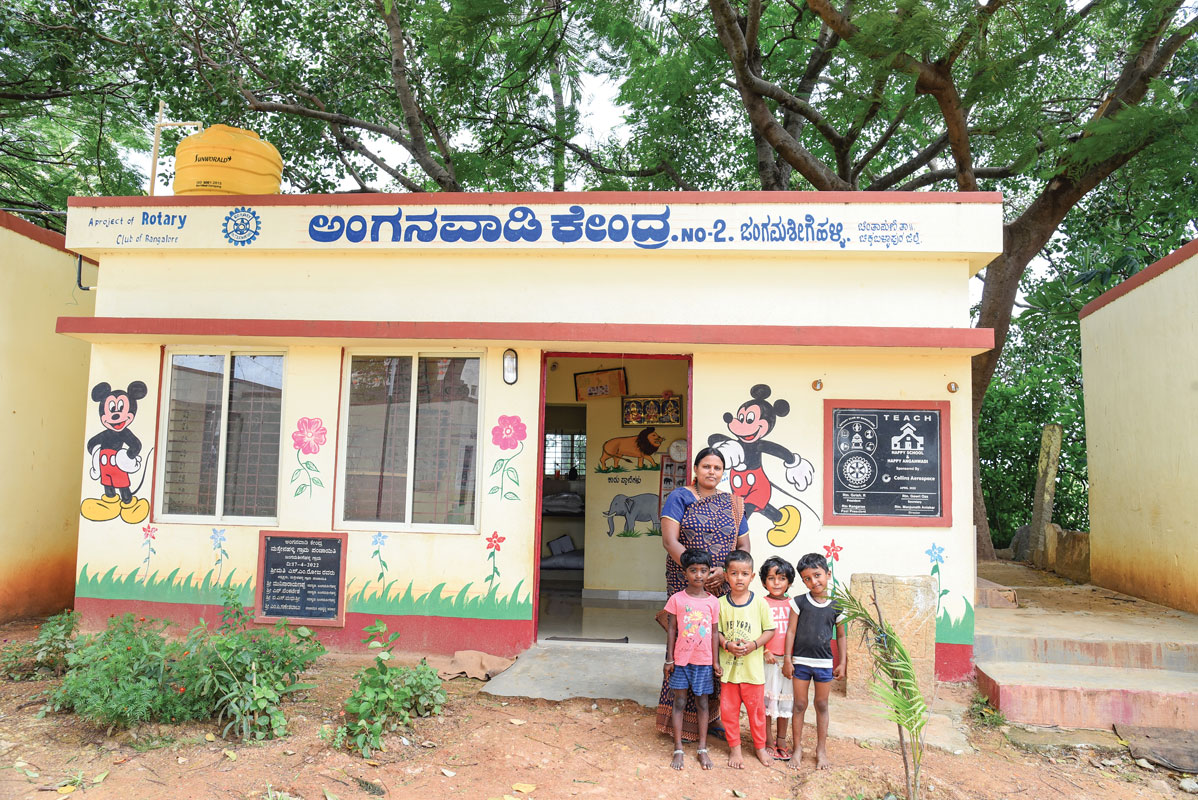
He adds, angrily, “We indulge in chopping of trees, deforestation and abuse of nature in so many different ways. As you were told, the same river goes to Vellore where it is flourishing but it has died here, leaving the region dry and barren and the villages struggling for clean, potable water.”
The afforestation drive has already started and in the last two years the Rotarians “have planted over 175 acres, some 30,000 plants which were identified by the forest department, panchayat and the villagers. And we have also constructed this kalyani,” says Ranga Rao.
Water shortage has been the main problem in this region but if this AOL-Rotary partnership keeps going and slowly achieves its lofty objectives, the water deprivation story can change. And it is indeed changing. I ask Rojamma if the people in the region are happy with this initiative. “Yes, they are a little happy now… slowly they are getting benefits,” she says.
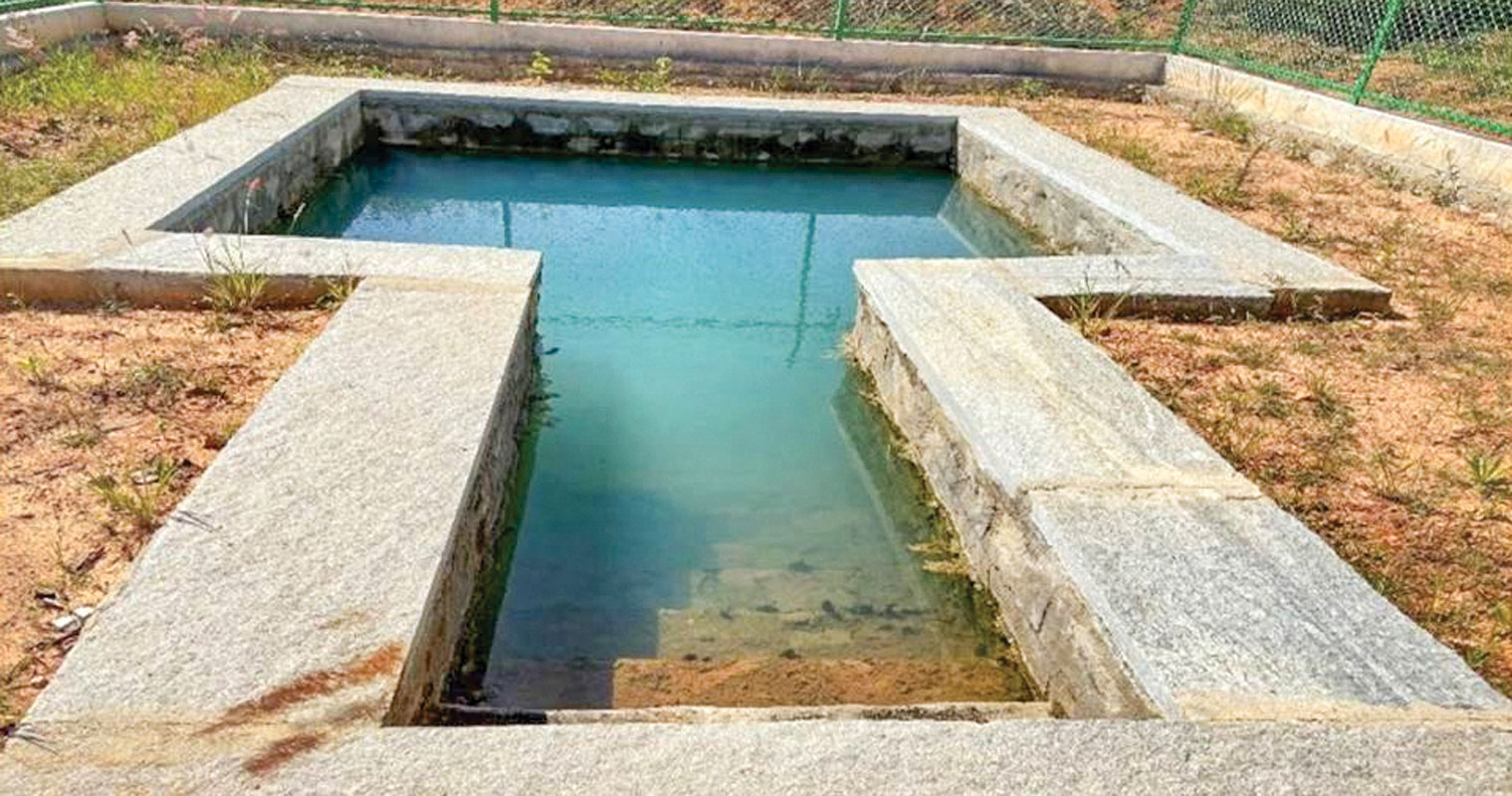
Ultimately, results matter. Sreenivasa Reddy from AOL relates a success story: “Before we entered the scene, in the Kaiwara (temple) village, every day 50 tankers were coming to bring water to the local people. After the rainy season, following the work we have done to recharge the groundwater, all the borewells were filled and no water tankers were required.”
On the work done by AOL, the retired forest officer Rao explains that as this is a hilly region and the rainwater tends to run off quickly without adequate percolation, “we have also done gully checks which are check dam like structures using locally available boulders to lower or block the flow of water. This is soil and moisture conservation work so that the water doesn’t run down from the hilltop speedily but percolates into the soil. Hence there is a lot of moisture conservation.”
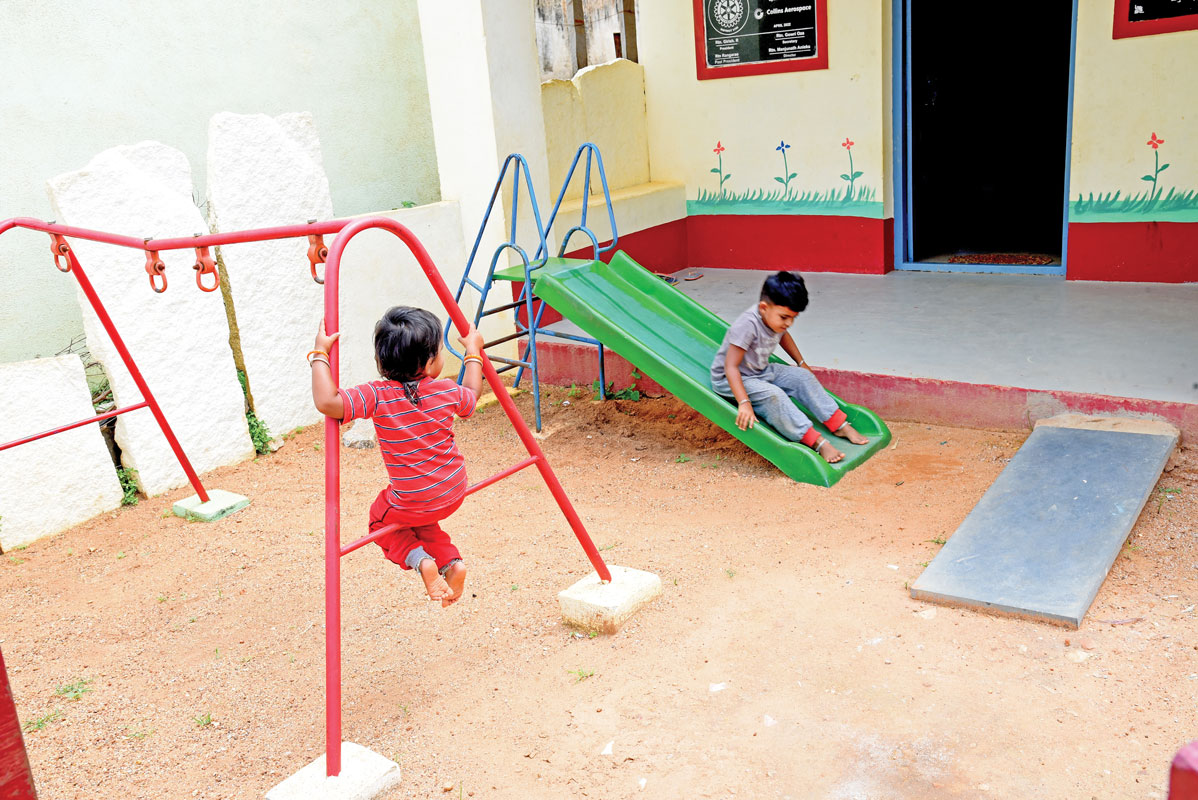
But when you are dealing with villages in India not exactly known for their economic prosperity, so many challenges and dynamics come into play while doing a project of such a magnitude and where benefits will accrue only after a few years. For instance this dry barren land — all of 400 acres — in this region is classified as Gomaala land. Rao, who is now an AOL adviser, responds to my puzzled look and says that earlier when the villages were surveyed and the cattle survey was done, this particular bit of land was kept for grazing. “The decision is based on the then cattle population; each village, or a bunch of 2–3 villages, have their own Gomaala where cattle can graze. In agricultural classification, it is known as C&D land or arid land that is not conducive for agriculture.”
Thanks to Rotary we are getting filtered water, small babies and young children are benefitting in the anganwadis, getting good nutrition and healthcare. The villagers are really happy.
— Rojamma, Panchayat president
But nothing is constant, and here too the dynamics have changed. The cattle population has come down and “people have now resorted to stall feeding…so most of them don’t take their cattle to the hillocks…only few sheep and goats go to the top of the hillock for grazing. Hence we thought we would rejuvenate this particular bit of land for two reasons. One, it is the origin of the Palar river, and we found three live streams down below, so by some moisturisation and conservation, we wanted to slow down the flow of the water, which we did by putting gully checks, and constructing a kalyani at the ground level.”
Ramakant adds that AOL got involved here a few years ago, “as river rejuvenation is one of our major activities and we are percolating the water through recharging injection wells (see picture, page no 17); we have put about 600 of these and the work is continuing; we are putting these in different villages along the stream or the path of the river. Thanks to the gully checks and these recharge wells which are put under the gully checks, more water percolates and the groundwater level has slowly gone up.”
He explains the technical reason for putting in these injection wells; “we tested the geology of the area and found that if you can penetrate and go deeper beneath the hard rock for 15 to 20ft, then the water goes through that well and forms a wet zone. Earlier, in this area you had to go down almost 1,000ft to strike water for a borewell; now in 4–5 years, the water level has come up to 500ft.”
On financing, Rao says that on afforestation, maintenance, water recharge solutions, etc, ₹95 lakh were spent and ₹1.1 crore on refurbishing primary schools, anganwadis, PHCs and public toilets. Next, for giving livelihood opportunities such as sheep, cattle, chicken, social forestry, etc, ₹1.8 crore has been set apart. While the CSR contribution is ₹2.5 crore, club members have donated around ₹35 lakh. Collins Aerospace has given ₹110 lakh as CSR funds. Club member Monica Mathias worked hard on CSR sourcing, Deepak Nakra and Dileep Pillai contributed liberally.
Dakoju’s contribution to this project comes from his TRF funds, and amounts to $15,000 (₹12.4 lakh) each year for three years.
On the kind of trees being planted, Dakoju says, “we have gone in mainly for the native trees, as research has shown that planting native species helps rejuvenate the hydrological cycle and activate the natural springs that feed the river. And of course, we all know that such trees are good for the ecosystem and will attract all kinds of microbes, insects, birds, reptiles etc. They will also attract butterflies and bees, apart from yielding fruits.”
Winning over villagers… Rotary style
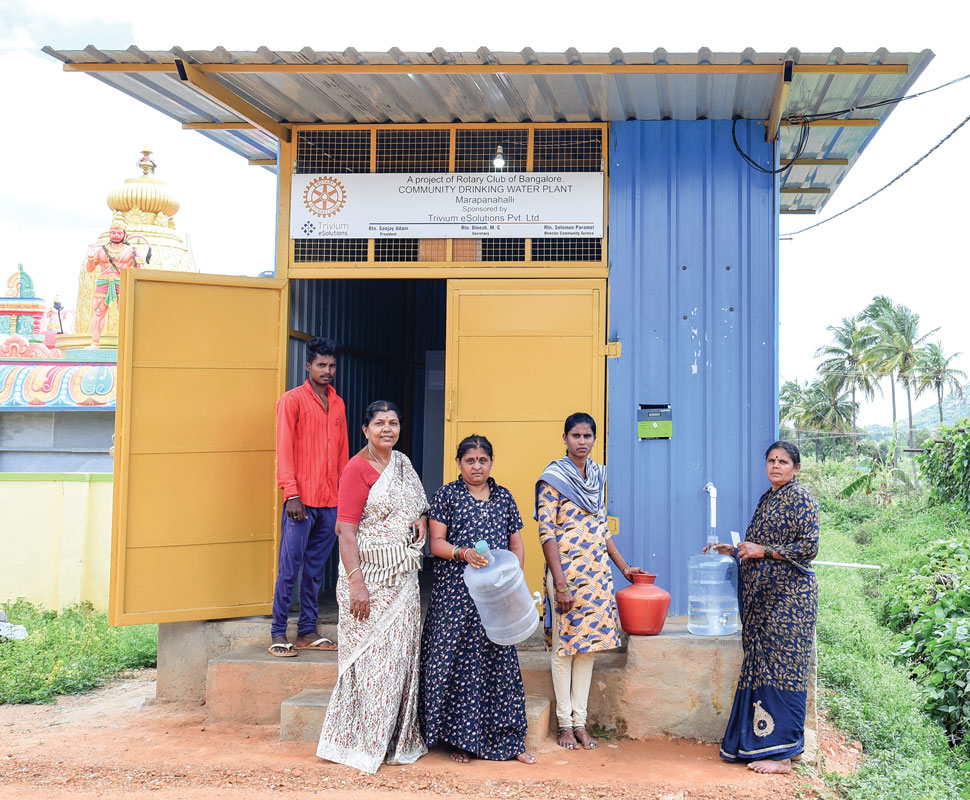
The most formidable challenge in getting support from the locals in the six villages in RCB’s lofty objective of afforestation and water conservation and augmentation in the driest parts of the Palar river basin “was convincing the villagers that we were their friends. For instance, when we started our afforestation drive, we realised that the villagers were confused. …they said first of all there is no rain, no business, hence no income, but at least we have land to graze our cattle. Now they are putting plants and trees, so even that will go.”
So we realised that there will be a problem, because the trees we plant will take 3–5 years to grow,” recalls RC Bangalore member and a core team member of this project Ravishankar Dakoju.
The villagers were also concerned about the grazing land for their cattle (which was later given at another location). So they had to be taken along; “and we brought them on board and started to involve them by doing what we do best… which is schools, toilet blocks, anganwadis, PHCs, street lamps, etc,” says V S Ranga Rao, the main architect of the project.
As the schools and anganwadis were repaired or rebuilt, two schools from scratch and one more will be done soon, not only the villagers, but also the panchayat and other local leaders were happy and realised that along with the promised long-term benefits, they were getting better schools for their children, good anganwadis and a much improved health and hygiene infrastructure in the six villages. “They are now much more willing to wait for the long-term restoration to happen; they know that ultimately, thanks to the tree planting and water table improvement efforts, the rain will come, and their water needs will be met. We knew that only where the basic needs of the villagers were met, it would be possible for the residents to respond positively and help in the growth of the thousands of plants that were to be planted.”
An RO water filter with a capacity of 500 litres has been put up by Rotary in Marapanalli village and three villages benefit from this. The farmers in the area grow mulberry, ragi, mango and vegetables, mainly tomatoes. The locals also work as daily labourers.
The Rotarians are next planning ways to enhance the livelihoods of the villagers by promoting chicken and cattle rearing. “We want to give cows, sheep and chicken to the people in the six villages; train them to plant millets in drought conditions, and skill the youth to retain them in the villages. The CSR contribution for this will be provided by Rainmatter Foundation. The resources are there but we want to ensure equitable distribution in each village to maintain the social dynamics between them. So we are treading carefully and have left the detailing to Rojamma and other village heads,”
says Rao.
He adds that director, community services, 2021–22, Manjunath Aneikar, played a special role in the speedy and efficient execution of all the infra work in the six villages. “Magic Manju, as he is popularly known, worked meticulously on all aspects of the project: getting government permissions, finalising contracts, and completing all civil work in time.”
About Palar River
The Palar is a rainfed river and runs through three states — Karnataka — Andhra Pradesh and Tamil Nadu — and has a length of 348km. Beginning as a small spring at an elevation of 800m above mean sea level in eastern Karnataka, the Palar flows through Kolar and Bangarupet taluks, eventually forming the massive Bethamangal tank, which serves as the primary source of water for the Kolar Gold Field region. It ends in the Bay of Bengal in Tamil Nadu.
The total area of the Palar basin is 17,633.19 sqkm — of which 3,123 sqkm are in Karnataka, 4,267 sqkm in Andhra Pradesh and 10,273.19 sqkm in Tamil Nadu.
Holistic development
The holistic development planned and being done by RCB in the six villages of the Palar basin includes easy access to basic health facilities, total immunisation, improved nutritional status for all, with special focus on children, adolescents, girls, pregnant women and lactating mothers, conversion of schools into smart schools, with IT- enabled classrooms, e-libraries and web-based teaching.
Also being planned are adult literacy, village libraries, sports and folk arts festivals, organic farming, seed banks, livestock development, dairy development and processing, social forestry, rainwater harvesting, and piped water supply with household taps. Village markets and health insurance are also on the cards.

